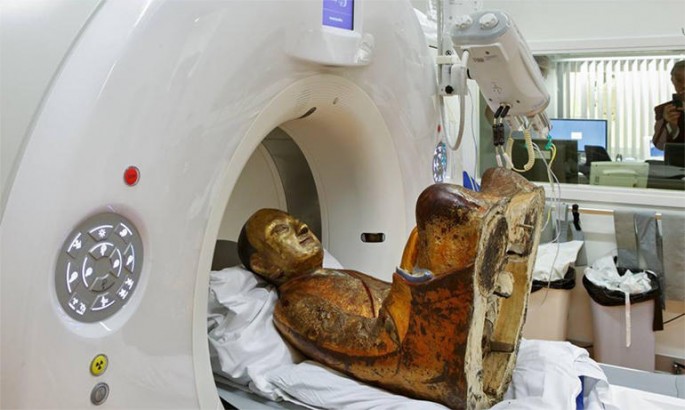Drents Museum researchers in the Netherlands have announced that they have found a Buddhist monk's mummified body inside a statue that dates back to as early as the 11th century.
The team, which was led by a Buddhist culture and art expert Erik Bruijin, already had an idea that the statue enclosed human remains, but it was not until the object was taken to the Amersfoort Meander Medical Centre that they were able to establish a concrete picture of the history that went with it.
An endoscopy and CT Scan revealed the complete skeleton of the mummified monk along with the fact that all organs were taken out prior to the process of mummification, the NL Times reported.
In the team's workplace were paper scraps surrounded by numerous ancient Chinese writing.
The research at involved both medical doctors and museum experts has come up with stunning images of the full skeleton of the mummy inside the statue together with its complete bone samples that could be utilized for DNA testing.
The mummified Buddhist monk enclosed inside a reliquary was identified as the Chinese Meditation School's Master Liuqian. Educational materials from the Museum have suggested that this mummified person is an example of "self-mummification"- a common practice among Buddhist monks in the 11th and 12th centuries.
Self-mummificaton or Sokushinbutsu were Buddhist priests or monks who have caused their own deaths in a method that progressed into being mummified, the Tamqui defined. This practice took place in the northern part of Japan during the Yamagata Prefecture.



























